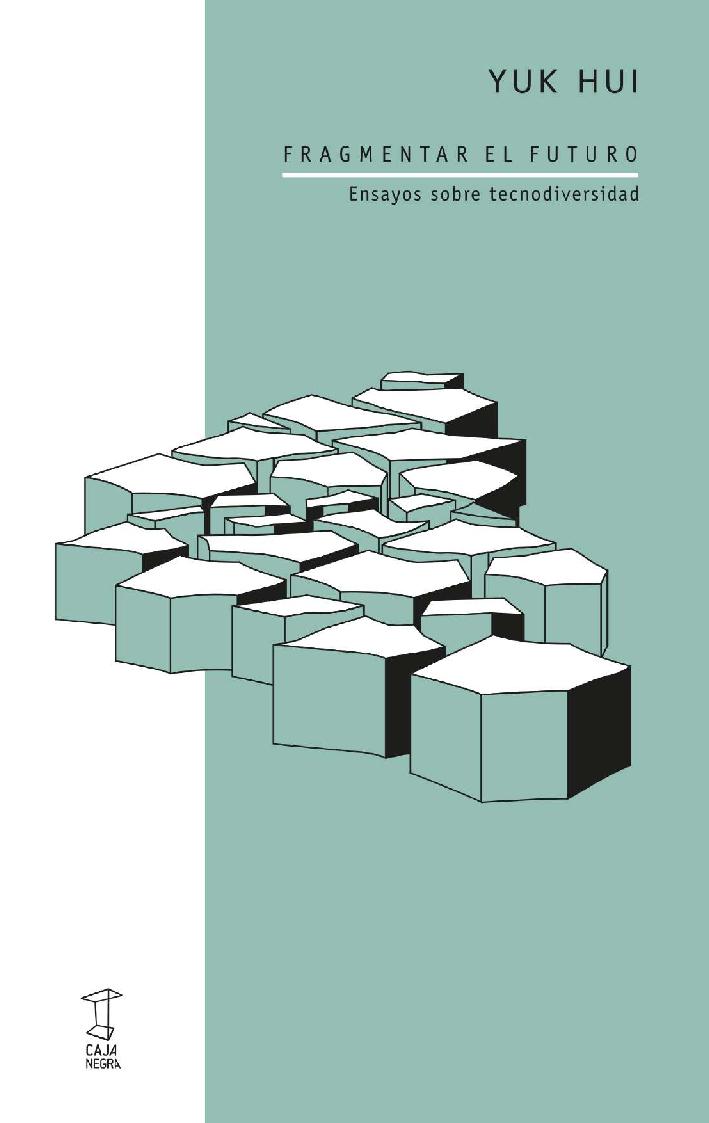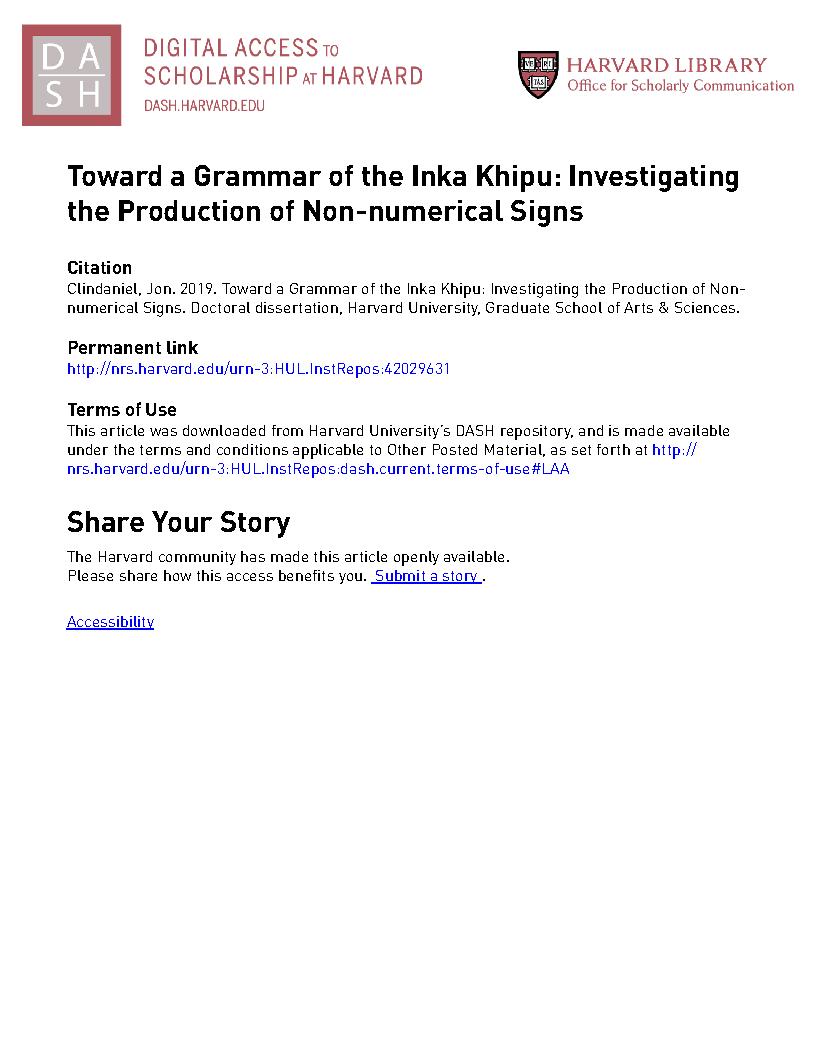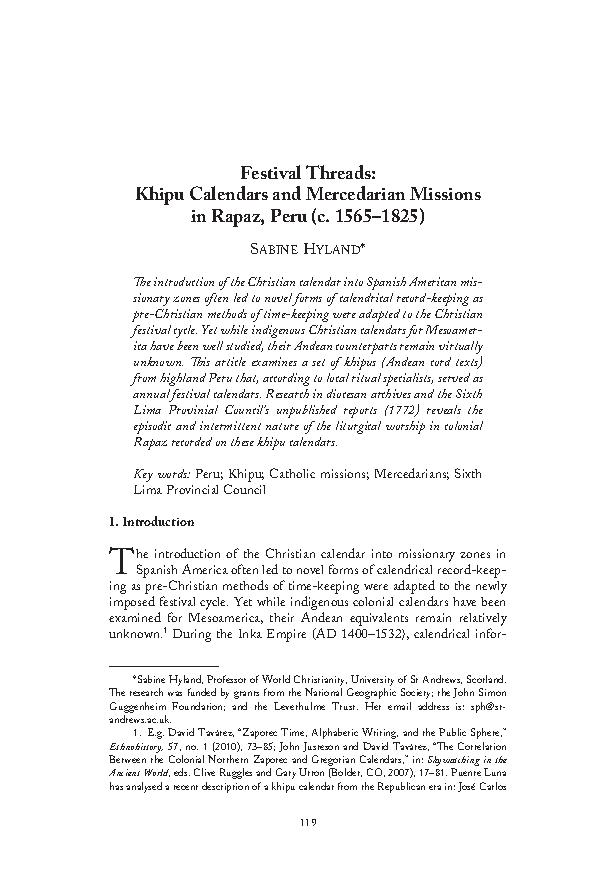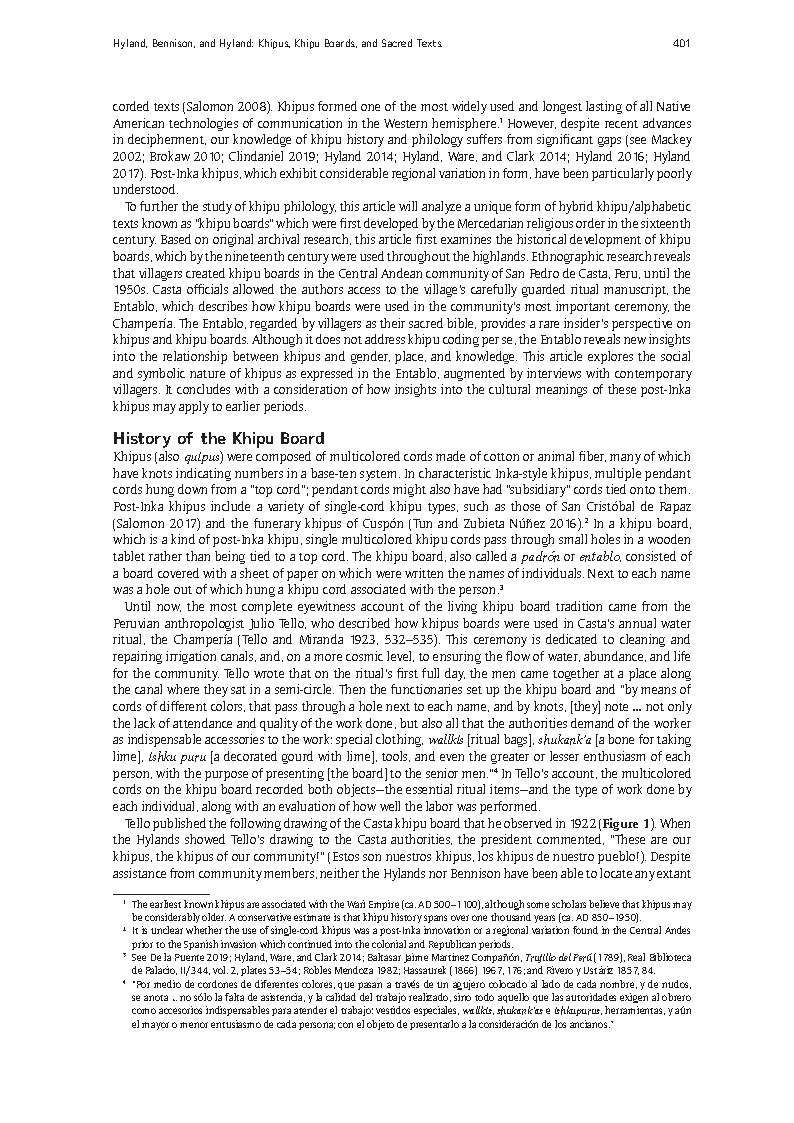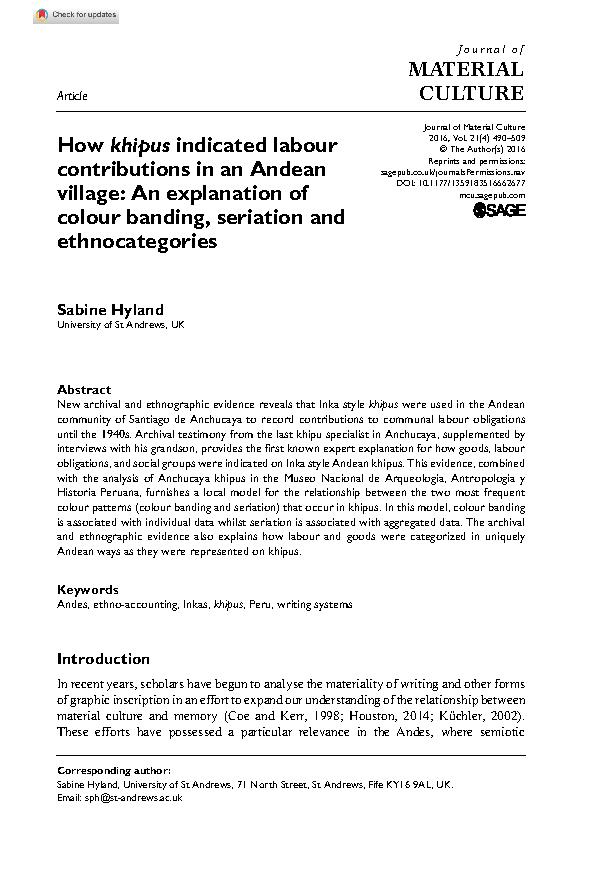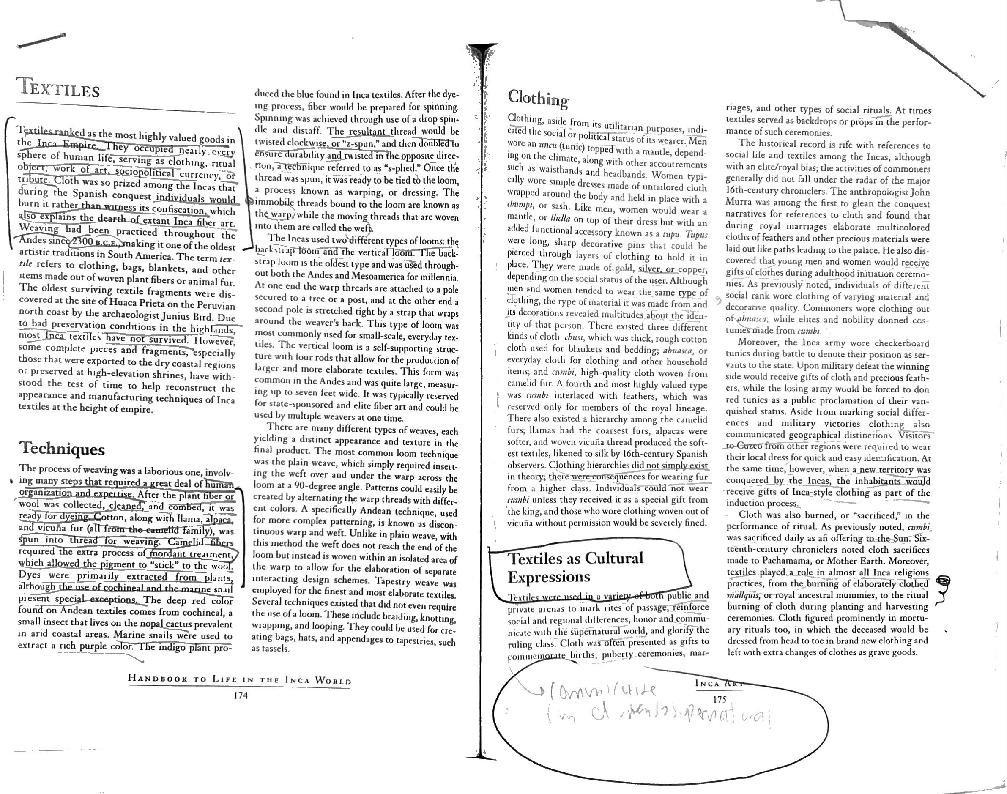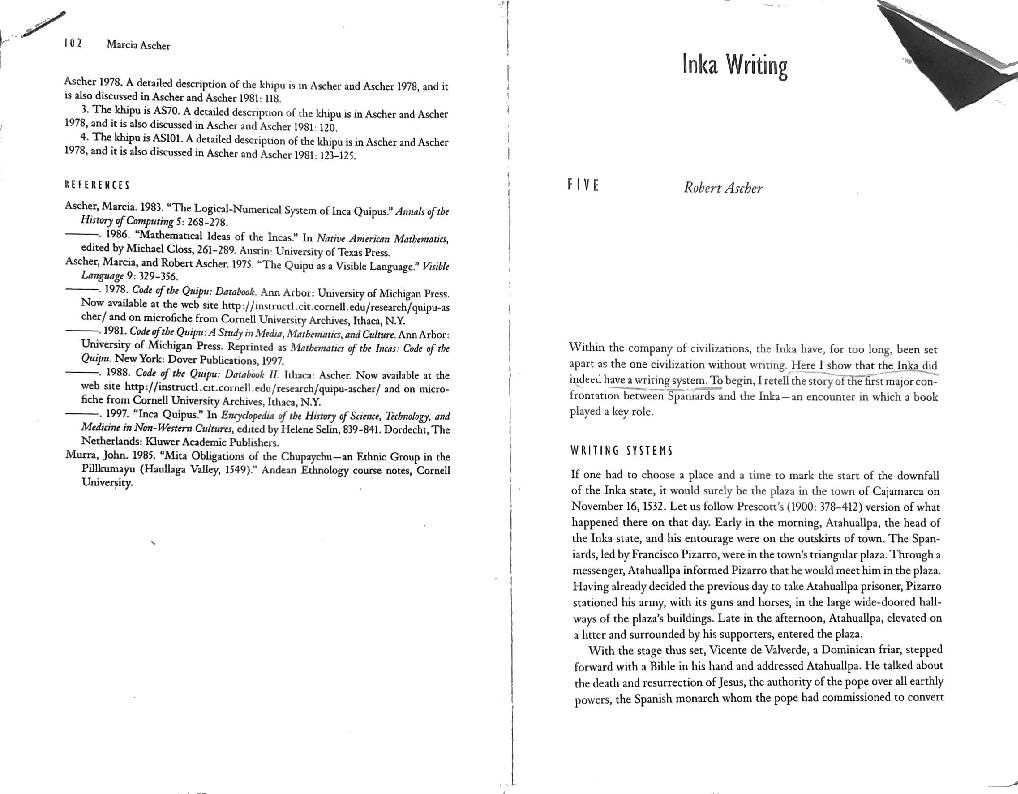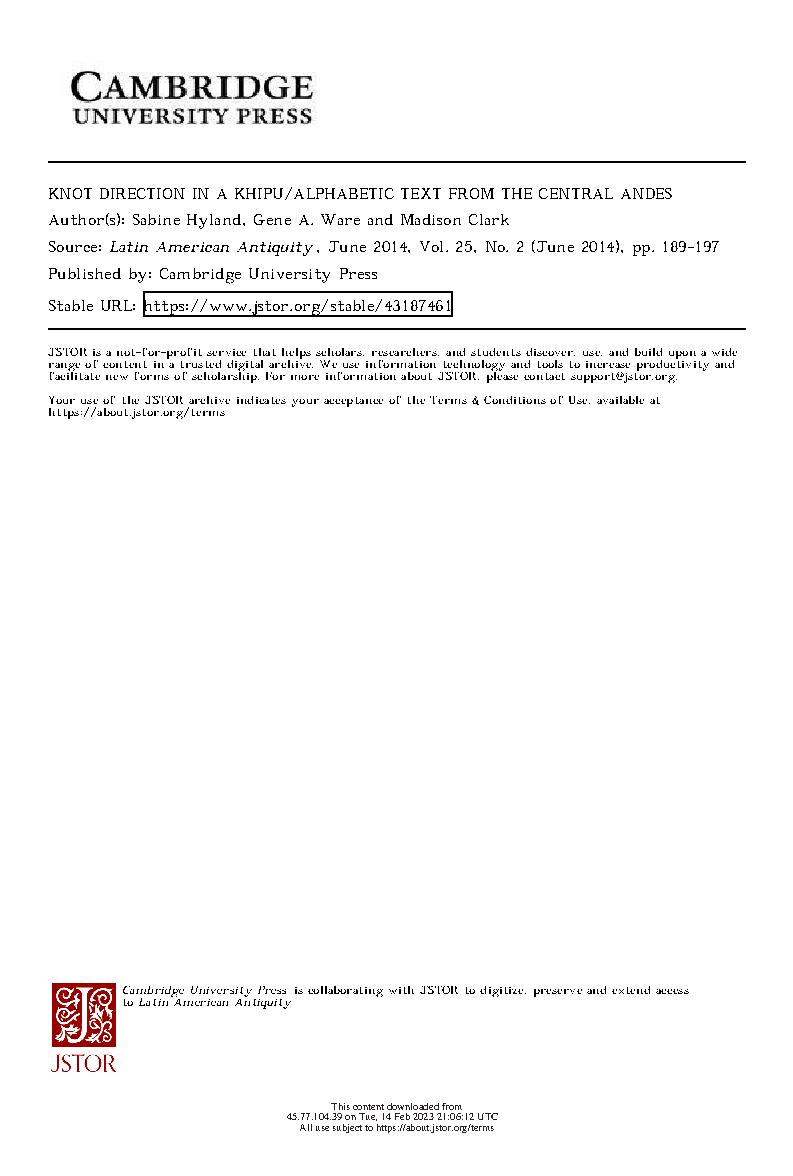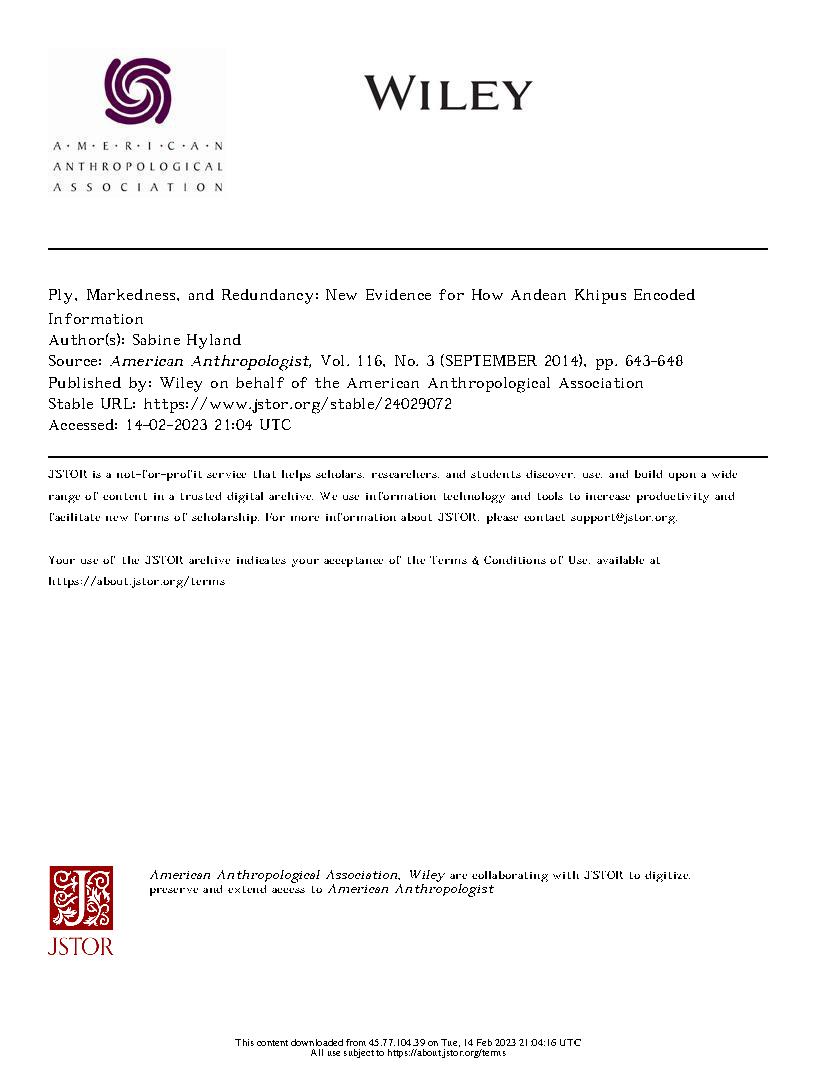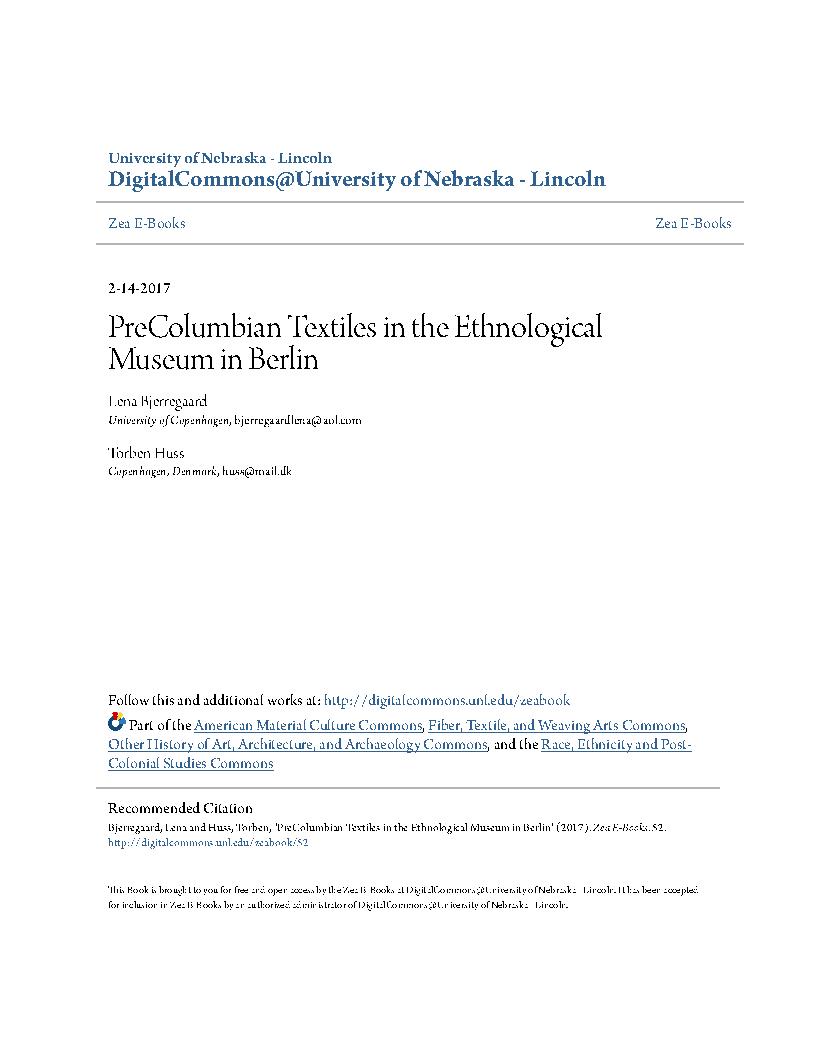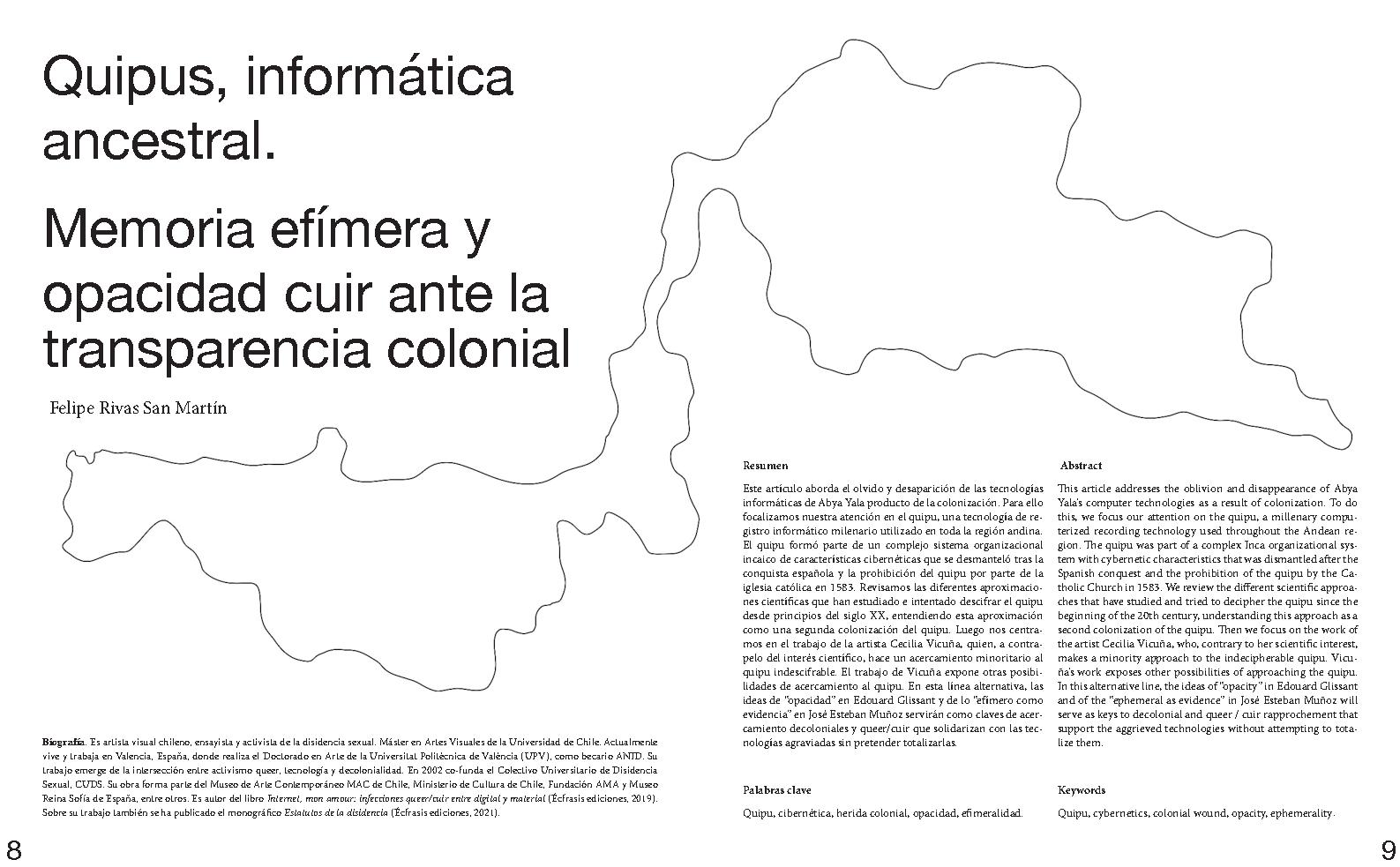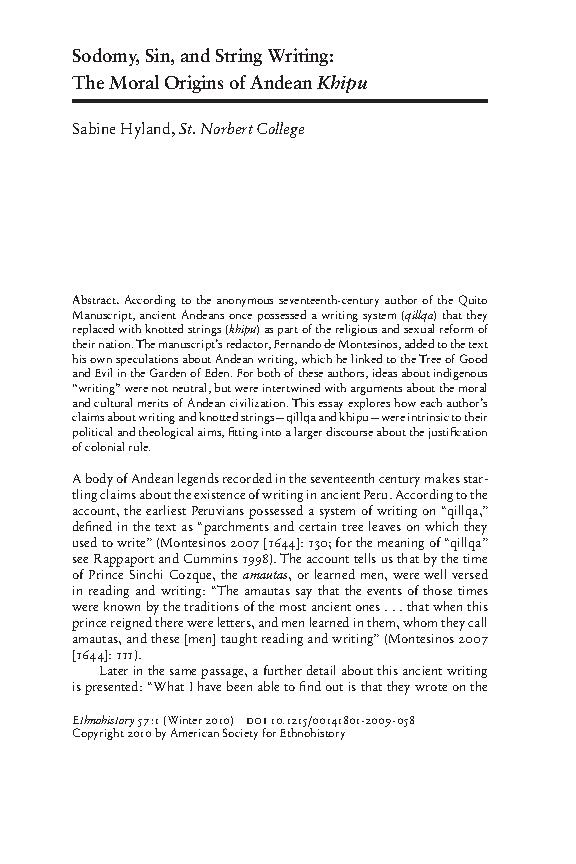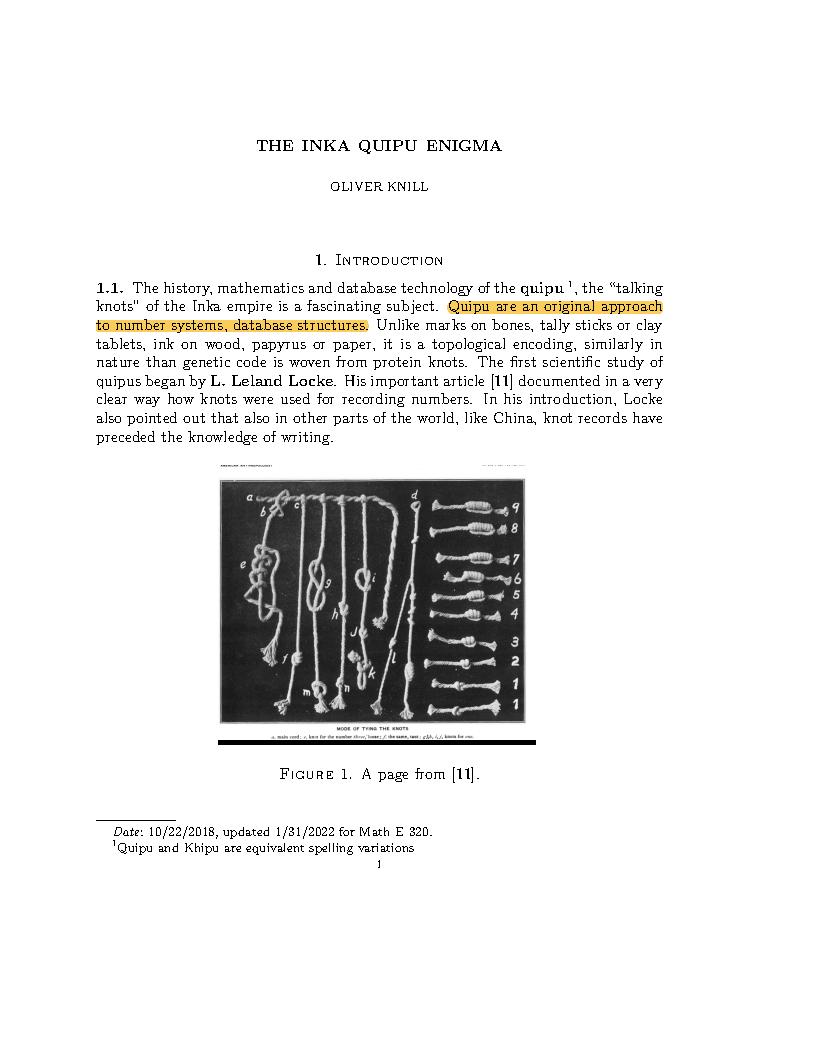IMG_6480.JPG
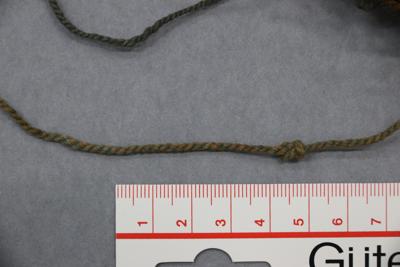

is an artists from Bogotá, Colombia.
Computational Insurrections is a decolonial computer project based on the Khipus (e.g. obj - 27733) from the textile collection of the Rautenstrauch-Joest-Museum. The connection between computer technology and the textile objects Khipus can be found in the fact that it is, in the true sense, a technological object that represents the enormous complexity of computer organization and coding used by the Inca culture. For researchers, such as Umberto Roncororoni, there is enormous contemporary potential in considering the vast complexity of pre-Columbian textile systems. This relevance is related to the potential of textiles to create new ways of structuring and categorizing data - fundamental principles of modern computing.
In the first phase of digital scholarship, museum pieces are digitized and modeled using photographs and digital reconstructions (e.g., 3D sculpture/photogrammetry). The second phase will be about symbolic reparation, seeking alliances with different public initiatives in Latin America for experiments with decolonial technologies (e.g. Exploratorio Medellín - Colombia, Escuelab Puno Lima, Plataforma Bogotá) so that the communities visiting these local sites are able to use, learn from and with the digital archives. Finally, the goal will be to develop prototypes for possible contemporary uses of the old computer technologies.
The dyed fabric is covered in the parts where the color will remain the same. Then it is placed under the sun for several weeks until the exposed fabric loses its color. Finally, the material that covers the fabric is removed and thus the image is the result.
Piece 1 process: https://vimeo.com/733739026
Piece 2 process: https://vimeo.com/740221265
El paisaje como un discurso
Landscape as a discourse. Coloniality through nature
http://isabellaceliscampos.xyz/paisaje-como-un-discurso/
Row cotton dyed with annatto, eucalyptus and cypress
subsequent selective natural bleaching with sunlight.
110 x 65 cm, 250 x 145 cm, 110 x 65 cm
fanzine
2022
El paisaje como un discurso is a series of reflections on some dominant colonial notions about nature and the natural that continue to prevail in local, national and global imaginaries. It seeks to bring to discussion the ways in which, from the global discourse, nature is assumed as an object, passive, external and opposed to culture, society, civilization and politics. And how, from this same discourse, nature or its constituent cultural, biological and ecological aspects have been used as instruments of power to hierarchize and marginalize populations and territories and make them available for their commodification to the detriment of multiple and diverse paradigms.
This first phase of the project focused on the processes of introduction of non-native species that have defined and restricted the nature, landscape and identity aspects of the populations of Bogota. This dynamic is evident in parks, streets and hills that are populated by pines, eucalyptus, cypresses and other foreign species from the Global North.
The case of the eastern hills (check the project link to read the complete research) manifests a coloniality (through) of nature. The notions and imaginaries of nature of the decision makers about the hills - scientists, engineers, politicians - were influenced in their totality by the notion of nature of the “civilized world” (North America, Europe). A widely spread idea of categorization of “the natures of the world” that continues to materialize in decisions and priorities of citizens and governments - local, regional and national - that make real discussions and solutions to current challenges such as the socio-environmental and climate crisis impossible.
Territorial Whitewashing
http://isabellaceliscampos.xyz/territorial-whitewashing/
Natural dyeing on raw cotton with walnut, Cypress, Fig, Rubia and Black Elder
Subsequent selective natural bleaching with sunlight.
240 x 110 x 1cm
42 x 68cm each piece
2021
The Amazon is going through a critical transformation process. There is a very organized, controlled planning project with great economic, operational and logistical capacity that diverges from the local vision of the territory. There is a multidimensional whitewashing. What is produced and what happens there is whitewashed; funders, land grabbers and deforesters are whitewashed.
Territorial Whitewashing is a series of 6 hand-dyed fabrics with barks, fruits and roots of non-native trees that then go through a natural selective bleaching process which results in 6 deforested areas in the Colombian Amazon. These are 6 records taken by the FCDS and Amazon Conservation during the last year that show the colonization and whitewashing processes that are taking place in this region with very precise interests in radically transform the territory.
The fabrics, that at the beginning had a homogeneous color, become the same satellite and aerial records of the Amazon. Both - the fabrics and the Amazon - go through a whitewashing process -. A whitewashing that seeks to homogenize and whiten the territory: place it at the service of extractivist and neoliberal logics and remove all its unique and alternative attributes from the Western paradigm. It is a whitewashing that functions as a metaphor for the multiple processes of alteration, concealment, invisibility, laundering and exoneration of the narratives, actions and actors linked to the problem of Amazonian transformation.
The deforested areas of the 6 pieces are (from left to right from above)
1. Coca crops in Sierra de la Macarena National Natural Park in Department of Meta.
2. Deforestation in Nukak Maku Indigenous Reserve in Department of Guaviare & Guanía.
3. Calamar – Miraflores Road in Department of Guaviare.
4. Illegal highway and deforested land on either side in Nukak Maku Indigenous Reserve in Department of Guaviare.
5. Deforested areas in Serranía de Chiribiquete National Natural Park in Department of Caquetá & Guaviare.
6. Large cattle farms divided in lots in department of Guaviare.
Key questions:
- What role does the symbolism of textile practices, colors, fibers and the process of quipu creation play in the coded information?
- How can the materiality of quipus (in its diversity) contribute to understand the quipu as a cultural artifact?
Quipus are a textile artifact for recording information used in several Andean cultures (within the Inca empire, during the colonial era, later and to the present day).
It is a textile artifact composed of a main rope from which more ropes with knots are detached from which in turn more ropes can be detached generating subcategories. These textile pieces were made of cotton fiber, alpaca and other animals (put which) and with different colorations, dyes from plants and animals.
The dominant research and historiographic work on quipus, as an artifact of codification and representation of information, have been marked by an interest in discovering their codification as a universal system that includes all types of quipu. They have been interpreted as a way of recording figures closely linked to state tasks, accounts and censuses of the Inca empire, which has been corroborated by comparing information from colonial-era records such as chronicles and illustrations of Spaniards.
However, some research (most notably the work of Marcia Ascher, Robert Ascher, Sabine Hyland) has proposed that the writing system of the quipus is contextual and adaptable to different meaning systems. In other words, that each quipu or series of quipu has its own coding system, where, variables such as the shape of the knots, the direction of the twists of the spinning and folding/picking, the colors, the way of attaching the strings to the main string and so on, would have a specific function for each context of each quipu.
Robert Ascher states that the quipu writing system is conceptual and that to decipher it “one would ultimately have to grasp several of the meaning systems of the culture using the writing” because quipus do not have an all-encompassing resolution. Especially, when assuming that this artifact was used for different tasks, such as recording numbers, stories, rituals, myths, tributes, laws, calendars. For example, in San Juan de Collata, Peru, there remains a quipu in the community that functioned as a means of communication between two communities that planned a rebellion against the colonial system (see: Sabine Hyland - unraveling an Ancient code written in strings), this quipu contains fibers of 5 different animals and different colors.
Within the meaning systems of Andean cultures, it is worth highlighting the symbolic, ritualistic and cosmogonic meanings.
The quipu can be understood as a technological object that represents a complex system of organization and codification of information and knowledge, where the symbolic affiliations with the materials and processes of textile work (spinning, colors, dyeing, etc.) would be inseparable from the codified contents/information.
https://www.documenta14.de/de/artists/13557/cecilia-vicuna
Cecilia Vicuña

Cecilia Vicuña, Quipu Mapocho (2016), verschiedene Materialien, u. a. ungesponnene Wolle, Zweige, Schnur, ca. 2 × 1,5 × 1,5 m, Performance, Llolleo, Chile, courtesy Cecilia Vicuña und Englund & Co. Gallery, London

Cecilia Vicuña, Quipu Womb (The Story of the Red Thread, Athens), 2017, gefärbte Wolle, Installationsansicht, EMST – Nationales Museum für Zeitgenössische Kunst, Athen, documenta 14, Foto: Mathias Völzke
Werke
Cecilia Vicuña
(geb. 1948, Santiago de Chile)
Quipu Womb (The Story of the Red Thread, Athens) (2017)
Gefärbte Wolle
Ca. 6 × 8 m
EMST – Nationales Museum für Zeitgenössische Kunst, Athen
A Ritual Performance by the Sea (2017)
Küste, Athen
Karl Marx (1972)
Öl auf Leinwand
92,1 × 71,7 cm
Lenin (1972)
Öl auf Leinwand
56,5 × 51,4 cm
Angel de la Menstruación (Menstruationsengel, 1973)
Öl auf Leinwand
57,8 × 48,3 cm
Sammlung Catherine Petitgas, London
Fidel y Allende (1972)
Öl auf Leinwand (Ausstellungskopie)
72 × 59 cm
Muerte de Allende (Tod von Allende, 1973)
Öl auf Leinwand
57,1 × 40 cm
Violeta Parra (1973)
Öl auf Leinwand (Ausstellungskopie)
57,8 × 48,3 cm
Gabriela Mistral (1986)
Öl auf Leinwand
61 × 49 cm
Maria Sabina (1986)
Öl auf Leinwand
59,7 × 49,5 cm
Alle Werke Neue Galerie, Kassel
Quipu Gut (2017)
Gefärbte Wolle
Maße variabel
documenta Halle, Kassel
Ritual Performance (2017)
Performance
documenta Halle, Kassel
In ihrer nordamerikanischen Wahlheimat – die Künstlerin lebt seit den 1980er Jahren in New York – ist Cecilia Vicuña in erster Linie für ihr dichterisches Werk bekannt. Dennoch ist sie der Berufung ihrer Jugendzeit treu geblieben und arbeitet seit mehr als vierzig Jahren als bildende Künstlerin in unterschiedlichsten Genres. Ihre ortsspezifischen Projekte sind Ausdruck ihrer Gabe, räumliche Gedichte zu komponieren, empfindsame, gefühlsbetonte Lyrik in drei Dimensionen. Vicuña bezeichnet diese speziellen Arbeiten als „quipoems“ – eine Verschmelzung von „poem“ (englisch für „Gedicht“) und „Quipu“. Letzteres wird in einem Online-Wörterbuch wie folgt definiert: „Aus einer Schnur bestehende Vorrichtung, an der mit Knoten versehene Fäden unterschiedlicher Farbe befestigt sind; diente im alten Peru zum Aufzeichnen von Ereignissen, zur Buchführung etc.“ Eine präkolumbische Art des Schreibens also, Frucht einer literarischen Tradition, der die Welt Dichtergrößen wie Gabriela Mistral, Pablo Neruda und Nicanor Parra verdankt. Vicuña, 1948 in Santiago de Chile geboren, ist sich der Bedeutung indigener Geschichte als Fundament für die lateinamerikanische Kultur des 20. Jahrhunderts in höchstem Maße bewusst.
Ihr aktuelles „quipoem“ in Athen in Form einer immersiven „weichen Skulptur“ in Übergröße besteht aus riesigen Fäden ungesponnener Wolle. Letztere wurde von einem lokalen Lieferanten bezogen und auffallend purpurrot gefärbt – zu Ehren einer synkretistischen religiösen Tradition, die durch die Nabelschnur menstrueller Symbolik die Muttergottheiten der Andenregion mit den maritimen Mythologien des alten Griechenland verknüpft.
Vicuñas frühe figurative Gemälde, entstanden zu Beginn der 70er Jahre, stellen die Porträts von Dichterinnen (unter anderen Mistral) einer Phalanx aus männlichen Politikheroen (unter anderen Karl Marx, Lenin, Fidel Castro und Chiles Salvador Allende) gegenüber. Deren unbeugsame Männlichkeit wird durch den für die Künstlerin typischen Pop-Stil auf amüsante Weise unterlaufen. Beispiele sind die heiligenscheinähnliche Blumengirlande rund um Marx’ Kopf oder die merkwürdige, an Genitalien gemahnende Symbolik in der surrealen Landschaft hinter Lenin. Diese Porträts, 1972 gemalt, wirken heute wie wehmütige Erinnerungen an einen vorzeitig beendeten utopischen Augenblick: Im Jahr darauf setzte ein von der CIA unterstützter und von Pinochet angeführter Militärputsch einen blutigen Schlussstrich unter Allendes sozialistisches Experiment. Diese Ereignisse zwangen auch Cecilia Vicuña in ein Exil – erst nach London und Kolumbien, dann nach New York –, aus dem die Künstlerin nie mehr wirklich heimgekehrt ist.
— Dieter Roelstraete
Gepostet in Öffentliche Ausstellung
Auszug aus dem documenta 14: Daybo
https://www.documenta14.de/de/calendar/19155/open-day
MAI
2
Gespräch
17 Uhr
Hochschule der Bildenden Künste Athen (ASFA) – Pireos-Straße („Nikos-Kessanlis“-Ausstellungshalle), Pireos 256, Athen
Zum iCal oder Google Calendar hinfügen
Ein Gespräch in der von Aristide Antonas gestalteten "Alten Bibliothek" als einem performativen Raum der Bildung und Begegnung. Cecilia Vicuña befasst sich mit alten und ursprünglichen Ritualen als mögliches Modell für die Zukunft und für die kollektive Produktion.
https://www.documenta14.de/de/calendar/16501/beach-ritual
APR
10
Performance
18–20 Uhr
Küste, Athen
Zum iCal oder Google Calendar hinfügen
Diese Performance ist integraler Bestandteil von Cecilia Vicuñas Beitrag zur documenta 14 – ein Opfer am Meeresufer, wobei sie dieselbe griechische Wolle benutzt, die sie schon bei der Herstellung ihrer „quipu“-Installation am EMST– Nationales Museum für Zeigenössische Kunst verwendet hat.
(South as a State of Mind Issue #8, documenta 14, #3)
https://www.documenta14.de/de/south/904_language_is_migrant
Language Is Migrant
Von Cecilia Vicuña
Language is migrant. Words move from language to language, from culture to culture, from mouth to mouth. Our bodies are migrants; cells and bacteria are migrants too. Even galaxies migrate.
What is then this talk against migrants? It can only be talk against ourselves, against life itself.
Twenty years ago, I opened up the word “migrant,” seeing in it a dangerous mix of Latin and Germanic roots. I imagined “migrant” was probably composed of mei, Latin for “to change or move,” and gra, “heart” from the Germanic kerd. Thus, “migrant” became “changed heart,”
a heart in pain,
changing the heart of the earth.
The word “immigrant” says, “grant me life.”
“Grant” means “to allow, to have,” and is related to an ancient Proto-Indo-European root: dhe, the mother of “deed” and “law.” So too, sacerdos, performer of sacred rites.
What is the rite performed by millions of people displaced and seeking safe haven around the world? Letting us see our own indifference, our complicity in the ongoing wars?
Is their pain powerful enough to allow us to change our hearts? To see our part in it?
I “wounder,” said Margarita, my immigrant friend, mixing up wondering and wounding, a perfect embodiment of our true condition!
Vicente Huidobro said, “Open your mouth to receive the host of the wounded word.”
The wound is an eye. Can we look into its eyes?
my specialty is not feeling, just
looking, so I say:
(the word is a hard look.)
—Rosario Castellanos
I don’t see with my eyes: words
are my eyes.
—Octavio Paz
In l980, I was in exile in Bogotá, where I was working on my “Palabrarmas” project, a way of opening words to see what they have to say. My early life as a poet was guided by a line from Novalis: “Poetry is the original religion of mankind.” Living in the violent city of Bogotá, I wanted to see if anybody shared this view, so I set out with a camera and a team of volunteers to interview people in the street. I asked everybody I met, “What is Poetry to you?” and I got great answers from beggars, prostitutes, and policemen alike. But the best was, “Que prosiga,” “That it may go on”—how can I translate the subjunctive, the most beautiful tiempo verbal (time inside the verb) of the Spanish language? “Subjunctive” means “next to” but under the power of the unknown. It is a future potential subjected to unforeseen conditions, and that matches exactly the quantum definition of emergent properties.
If you google the subjunctive you will find it described as a “mood,” as if a verbal tense could feel: “The subjunctive mood is the verb form used to express a wish, a suggestion, a command, or a condition that is contrary to fact.” Or “the ‘present’ subjunctive is the bare form of a verb (that is, a verb with no ending).”
I loved that! A never-ending image of a naked verb! The man who passed by as a shadow in my film saying “Que prosiga” was on camera only for a second, yet he expressed in two words the utter precision of Indigenous oral culture.
People watching the film today can’t believe it was not scripted, because in thirty-six years we seem to have forgotten the art of complex conversation. In the film people in the street improvise responses on the spot, displaying an awareness of language that seems to be missing today. I wounder, how did it change? And my heart says it must be fear, the ocean of lies we live in, under a continuous stream of doublespeak by the violent powers that rule us. Living under dictatorship, the first thing that disappears is playful speech, the fun and freedom of saying what you really think. Complex public conversation goes extinct, and along with it, the many species we are causing to disappear as we speak.
The word “species” comes from the Latin speciēs, “a seeing.” Maybe we are losing species and languages, our joy, because we don’t wish to see what we are doing.
Not seeing the seeing in words, we numb our senses.
I hear a “low continuous humming sound” of “unmanned aerial vehicles,” the drones we send out into the world carrying our killing thoughts.
Drones are the ultimate expression of our disconnect with words, our ability to speak without feeling the effect or consequences of our words.
“Words are acts,” said Paz.
Our words are becoming drones, flying robots. Are we becoming desensitized by not feeling them as acts? I am thinking not just of the victims but also of the perpetrators, the drone operators. Tonje Hessen Schei, director of the film Drone, speaks of how children are being trained to kill by video games: “War is made to look fun, killing is made to look cool. ... I think this ‘militainment’ has a huge cost,” not just for the young soldiers who operate them but for society as a whole. Her trailer opens with these words by a former aide to Colin Powell in the Bush/Cheney administration:
OUR POTENTIAL COLLECTIVE FUTURE. WATCH IT AND WEEP FOR US. OR WATCH IT AND DETERMINE TO CHANGE THAT FUTURE
—Lawrence Wilkerson, Colonel U.S. Army (retired)
In Astro Noise, the exhibition by Laura Poitras at the Whitney Museum of American Art, the language of surveillance migrates into poetry and art. We lie in a collective bed watching the night sky crisscrossed by drones. The search for matching patterns, the algorithms used to liquidate humanity with drones, is turned around to reveal the workings of the system. And, we are being surveyed as we survey the show! A new kind of visual poetry connecting our bodies to the real fight for the soul of this Earth emerges, and we come out woundering: Are we going to dehumanize ourselves to the point where Earth itself will dream our end?
The fight is on everywhere, and this may be the only beauty of our times. The Quechua speakers of Peru say, “beauty is the struggle.”
Maybe darkness will become the source of light. (Life regenerates in the dark.)
I see the poet/translator as the person who goes into the dark, seeking the “other” in him/herself, what we don’t wish to see, as if this act could reveal what the world keeps hidden.
Eduardo Kohn, in his book How Forests Think: Toward an Anthropology Beyond the Human notes the creation of a new verb by the Quichua speakers of Ecuador: riparana means “darse cuenta,” “to realize or to be aware.” The verb is a Quichuan transfiguration of the Spanish reparar, “to observe, sense, and repair.” As if awareness itself, the simple act of observing, had the power to heal.
I see the invention of such verbs as true poetry, as a possible path or a way out of the destruction we are causing.
When I am asked about the role of the poet in our times, I only question: Are we a “listening post,” composing an impossible “survival guide,” as Paul Chan has said? Or are we going silent in the face of our own destruction?
Subcomandante Marcos, the Zapatista guerrilla, transcribes the words of El Viejo Antonio, an Indian sage: “The gods went looking for silence to reorient themselves, but found it nowhere.” That nowhere is our place now, that’s why we need to translate language into itself so that IT sees our awareness.
Language is the translator. Could it translate us to a place within where we cease to tolerate injustice and the destruction of life?
Life is language. “When we speak, life speaks,” says the Kaushitaki Upanishad.
Awareness creates itself looking at itself.
It is transient and eternal at the same time.
Todo migra. Let’s migrate to the “wounderment” of our lives, to poetry itself.
https://www.hessenschau.de/documenta360/#pano=581


https://www.brooklynmuseum.org/exhibitions/cecilia_vicuna

Cecilia Vicuña: Disappeared Quipu
May 18–November 25, 2018
For millennia, ancient peoples of the Andes created quipus—complex record-keeping devices, made of knotted cords, that served as an essential medium for reading and writing, registering and remembering. New York–based Chilean artist and poet Cecilia Vicuña has devoted a significant part of her artistic practice to studying, interpreting, and reactivating the quipus, which were banned by the Spanish during their colonization of South America. Drawing on her indigenous heritage, Vicuña channels this ancient, sensorial mode of communication into immersive installations and participatory performances.
Disappeared Quipu pairs ancient quipus from our collection with a newly commissioned installation by Vicuña that combines monumental strands of knotted wool with a four-channel video projection. Together, these quipus of the past and present explore the nature of language and memory, the resilience of native people in the face of colonial repression, and Vicuña’s own experiences living in exile from her native Chile. Each knot of Vicuña’s modern-day quipus gives radical possibility to the connective and expressive capacities of a language nearly lost to history.
On view in the adjacent gallery are thirteen ancient Andean textiles selected by Vicuña from our collection. Featured in the artist’s video projection, these textiles span a period of fourteen hundred years and complement Vicuña’s installation by honoring an important indigenous artistic tradition.
Cecilia Vicuña: Disappeared Quipu is organized by the Brooklyn Museum and the Museum of Fine Arts, Boston. The Brooklyn presentation is initiated by the Elizabeth A. Sackler Center for Feminist Art, and is organized by Catherine Morris, Sackler Senior Curator for the Elizabeth A. Sackler Center for Feminist Art, and Nancy Rosoff, Andrew W. Mellon Senior Curator, Arts of the Americas, with Serda Yalkin, Curatorial Assistant, Arts of the Americas and Europe. The MFA presentation is organized by Liz Munsell, Lorraine and Alan Bressler Curator of Contemporary Art, and Dennis Carr, Carolyn and Peter Lynch Curator of American Decorative Arts and Sculpture. Gary Urton, Dumbarton Oaks Professor of Pre‐Columbian Studies at Harvard University, is a collaborative consultant to the project. Robert Kolodny and Ricardo Gallo respectively, created the video projection and sound design of the work.
Leadership support is provided by Elizabeth A. Sackler. Generous support is provided by the Horace W. Goldsmith Foundation and the Kaleta A. Doolin Foundation.



This administrative quipu, which consists of three different quipus attached along the primary cord, was used to record statistical information, such as taxes, census data, and storehouse inventories.
Administrative quipus are characterized by pendant cords with tiers of knots separated by spaces that indicate decimal values—what we would understand as the individual columns of digits in a numbering system, such as units (1 through 9), tens, hundreds, and thousands. The twist direction of the cords is almost always Z-spun and S-plied. The Inca used three main knots (visible on this quipu) to signify numerical values: figure-eight knots, long knots, and single knots. Each knot type signified a different unit of measurement.
Cord color also had significance; however, its meaning is at present unknown. The plain white, reddish-brown, and tan cords on the right are blanks for future use.

QUIPUS-ARSENALES DE LA MEMORIA - Christian Sauer
La confección de cordones anudados para ayudar a la memoria estaba muy extendida en muchas regiones del mundo y aún hoy se practica en algunos casos; incluso en el contexto europeo moderno, el famoso nudo de un pañuelo resulta familiar a casi todo el mundo como la forma más sencilla de anudado textil. Una técnica mucho más sofisticada de dispositivos mnemotécnicos se oculta tras los quipus andinos (quechua: 'nudos'), en su día los instrumentos más importantes para registrar y administrar el antiguo imperio inca del Tawantinsuyu.
A un cordón principal, cuya longitud puede variar considerablemente, se atan varios cordones longitudinales (colgantes) entrelazados con nudos en distintos puntos y a diferentes distancias del cordón principal, que designan determinadas categorías de un sistema decimal. Éstos se completan con otros cordones auxiliares, en los que a su vez pueden registrarse subcategorías de los niveles de orden registrados en los cordones longitudinales. Dependiendo de la posición vertical y horizontal en esta disposición, de la longitud del hilo y del tipo de nudo que se haga en la cuerda, estos nudos tienen distintos significados.
Sin embargo, una representación de valores puramente numéricos tendría poco sentido si el objeto de los números de la cadena no estuviera también codificado. Esto se consigue mediante una coloración diferente de las cadenas, que en parte es análoga a las cosas que hay que representar, pero en la que también pueden manifestarse relaciones categóricas abstractas.
En el caso más sencillo, una simple cuerda de color puede referirse de forma bastante viva a cosas que deben registrarse en consecuencia: blanco para el metal o la plata, amarillo para la tierra o el oro, verde para el árbol o la madera, etc. Si una coloración blanca ("metal") se superpone a otra verde ("madera"), se habla en sentido figurado de una "victoria del metal sobre la madera", en el sentido fáctico de talar y cortar madera. Otras combinaciones de colores también pueden designar contextos religiosos de significado; una coloración azul-amarilla-blanca, por ejemplo, marca la fiesta inca del sol Intiraymi.
Las posibilidades de variación de color surgen del número, la forma y la dirección en que se retuercen los cordones para formar un nuevo cordón, por lo que un mismo cordón puede adoptar varios tonos de color. Si combinamos estas posibilidades de codificación semántica con el carácter estadístico-numérico de los arreglos de nudos, podemos imaginar fácilmente que los quipus proporcionan información muy concreta sobre todo tipo de actividades culturales.
¿¿?¿ La función esencial de los quipus era recordar el contenido memorizado de los discursos transmitidos oralmente aplicando convenciones de descodificación acordadas culturalmente. Sin embargo, la descodificación y reconstrucción de los contenidos fijados en las puertas nodales estaba reservada a una casta de especialistas, los quipucamayocs, encargados específicamente de ello. Cómo se entrelazaba realmente esta "llave oral" con las estructuras de los Quipus sigue siendo un misterio sin resolver.
También cabe suponer que, a pesar de su compleja función mnemotécnica, los quipus sólo pueden
función, los quipus sólo eran capaces de captar todo lo que se podía contar de alguna forma. Por tanto, también hay que considerar los límites de la fijabilidad de la información y los contenidos a través de cuerdas anudadas.
Los quipus son sólo un ejemplo de los muchos tipos de "textos" no alfabéticos que sólo gradualmente se están incluyendo en un marco más amplio de consideración de los sistemas escritos o similares a las escrituras. Como ayudas para la memoria, apoyan principalmente la transmisión oral de conocimientos culturales y representan una posible variante para el almacenamiento externo de la memoria. Su función social como
Su función social como portadores de la memoria cultural dentro de su contexto social es comparable a la función de los libros en la cultura escrita occidental.
Christian Sauer
DISCOVER MAGAZINE 2017
The Inka Empire Recorded Their World In Knotted Cords Called Khipu. The great South American civilization used complex knots and fibers for record-keeping and communication (2017): Zitieren und Belegen von Literatur in wissenschaftlichen Arbeiten. <http://discovermagazine.com/2017/oct/unraveling-a-secret> (17.10.2019).
High in the Peruvian Andes, in the remote village of San Juan de Collata, sits a wooden box that’s sacred to the locals who keep close guard over it. It contains 487 cords of twisted and dyed animal fibers that, according to its caretakers, encode messages planning an 18th-century rebellion.
Anthropologist Sabine Hyland was invited by community members to study the strings — the first outsider permitted to view them — but only for 48 hours and under constant supervision.
Although no one alive today can decipher the cords, their general message and significance has been passed down orally for generations. Hyland was told by a village elder, “If we could read what is in here, we would know for the first time who we truly are.”
The strings are khipus, devices invented by indigenous Andeans to store information. Khipus are mostly known by archaeologists as the records of the Inka civilization, the vast multiethnic empire that encompassed as many as 18 million people and nearly 3,000 miles along the Andes and the Pacific coast of South America. Builders of the spectacular mountain fortress of Machu Picchu, the Inka ruled from the early 1400s until the Spanish conquest began in 1532.
According to Spanish chroniclers, the Inka did not write; instead, they tied information into khipus, which documented all matters of affairs: tributes, censuses, calendars, laws, rituals and narrative histories. But no Spaniards bothered to chronicle how information was encoded into strings, and so the records of the Inka lay unread, tied up in some 950 surviving khipus, scattered around the world in museums and other collections.
This could change, thanks to insights gleaned from the Collata khipus and several others recently discovered in villages and through archaeological excavations.
“I very much believe that within my lifetime, we’ll be able to interpret khipus,” says Hyland, who is based at the University of St. Andrews in Scotland. “I don’t think it’s going to be easy.”
More Than Memory Aids
The traditional khipu system was fairly standard. There is a primary top cord, to which pendant cords are tied. The pendant cords may be tied with subsidiary cords, which may be tied with more subsidiary cords, and so on. The most elaborate khipus, which could be census records of annual tributes owed to Inka lords, contain upward of 1,500 pendants dangling from the primary cord and six levels of subsidiaries branching from the pendants. Other khipus are just a few strings, made by herders to keep stock of grazing animals.
More than a century ago, Leslie Leland Locke, a historian of mathematics, determined how knots on the cords represent numbers in a base-10 decimal system. For example, the number 385 would be coded by 3 linked knots, followed by a space, then 8 linked knots, a space, and then a special long knot, used only for numbers 2 through 9, with 5 turns to express the number 5.
This is the one aspect of the khipu code that has been deciphered — and many scholars believe it is the only aspect to decipher. The traditional view among archaeologists is that khipus kept numerical data and were memory aids, like rosary beads. Anyone could read the numbers, but what a khipu counted would be known only by its maker.
But there are clues that khipus contain much more information. Some don’t have knots, and some have cords that vary by fiber type and color. Moreover, Spanish colonial documents indicate that khipus recorded laws, rituals and history. And discovering such greater complexity hidden in the khipus would help answer a long-simmering question: How could the Inka manage a vast, bureaucratic empire without a proper writing system?
Ancient Binary Code
Gary Urton, considered the foremost authority on khipus, is convinced the cords were more than memory aids. The Harvard anthropologist, who has studied the strings for 25 years, introduces himself as “one of the two or three people in the world who actually spend their entire time fretting about the khipus. . . these devices that look like knotted mops.”
He has shaggy, gray bangs, rectangular glasses and the demeanor of a hippie absorbed in serious philosophical pondering. Urton admits that his obsession with khipus may stem from his severe childhood stutter, which made him feel like thoughts were trapped inside him, just as Inka records are trapped in their cords. That, and the fact that he quit Cub Scouts because he couldn’t master knot tying.
According to Urton, khipus were a standardized way of recording specific ideas in permanent signs: in other words, a writing system.
He has methodically analyzed about 650 khipus, documenting every cord and knot, as well as more subtle details such as patterns of spacing and color, ply (the direction a cord twists) and knot orientation (S-knots cross the string left to right; Z-knots cross right to left).
“Either the whole damn thing is just a riot of idiosyncratic knotting and tying and colors, or there’s some order to it,” he says.
In 2003, Urton proposed a model for this order, arguing that khipus recorded information using an ancient binary code. Just as computers can encode anything through sequences of 0s and 1s, the khipu symbolized ideas through features of the strings that are inherently binary, such as the S or Z knots, clockwise or counterclockwise ply, and fibers of cotton or animal fiber. At the time, Urton identified seven binary features, which would allow for 128 distinct signs. Including different colors would make over 1,000 signs. He did not think the system was alphabetic, with signs representing sounds. Rather, he saw it as semasiographic: Signs had meanings, similar to musical notes and mathematical symbols.
The theory was certainly provocative, and contested. “Any individual element he identifies could be significant in a khipu, or it might not be,” says Galen Brokaw, a scholar of the Latin American and Latino Studies department at Montana State University. Brokaw has written the comprehensive book A History of the Khipu based on archaeological evidence and colonial-era manuscripts that mention the devices. Although individual texts can be misleading, by considering all the sources together, you can get closer to the real story, he says.
And there was no direct evidence in these sources or elsewhere to support Urton’s binary code idea — at least not back when he first proposed it.
Khipus in the Mountains
Urton’s model comes from patterns observed in the khipus, influenced by ethnographic research. He’s spent years living in Andean villages, learning how the people view the world, how they classify things and organize society. His unique insights, says Hyland, are the result of “his very deep knowledge and understanding of Andean culture and just having looked at so many khipus for so long.”
Still, she would read his ideas and think, “Yeah, maybe he’s right, maybe he’s wrong, who knows.” There was no way to check the claims. As far as any scholars knew, the last people to read khipus were ancient history.
Then in the mid-’90s, Frank Salomon, an anthropologist at the University of Wisconsin-Madison, discovered khipus in Peru’s rural Huarochirí province, about 60 miles from bustling Lima but over 10,000 feet higher in the mountains and a world away in terms of lifestyle. In addition to using alphabetic writing, people in Huarochirí were recording information with Inka-style khipus into the 20th century. The last khipu experts died a couple of generations ago, but villagers today recall aspects of how the devices worked.
Salomon says he was “floored because at that time, khipus were known primarily as archaeological objects and not anything that is part of our modernity.”
Since then, he and Hyland have found more khipus in other Andean villages. Unlike the ancient specimens in museums, these are associated with living memories and written documents, which provide clues to deciphering them.
And the cords appear to support Urton’s theory. “I’m studying these khipus, and I don’t know how many times I said to myself, ‘Oh shit, Gary was right,’ ” says Hyland.
For example, Urton knew that Andean people classify things into pairs of higher and lower value, such as milking cows versus dry cows, or labor done by men versus women. (Sorry, fellow women; in some villages, our work is worth only half that of men.) Observing patterns of knot direction on ancient khipus, he hypothesized that S- and Z-knots indicated the higher- and lower-ranked components of a pair.
Hyland found this to be true for a khipu board, a device used by post-colonial Andeans familiar with both letters and strings. Khipu boards listed names in alphabetic script; each written name was accompanied by a cord representing that person’s fulfillment of community and religious obligations, such as attending a ritual or participating in the annual village-wide task of cleaning an irrigation canal.
Hyland studied a board that dates back to the 1800s. Although many names were faded by bat urine and dirt, she was able to read most through a camera that combines visible, ultraviolet and infrared light, revealing trace pigments that can’t be seen by the human eye. Then, working with the four oldest community members, she assigned the names to social groups. Among the identifiable names, those with S-knots belonged to one social group, those with Z-knots to another.
In another case, Hyland found archival notes from an interview in 1935 between an archaeologist and a local khipu expert. She was able to compare this testimony with the actual khipus discussed, now in a Lima museum, and to further question the expert’s grandson, who still resides in Huarochirí.
The results confirmed that individual data, such as the goods or services of a single person, were represented by color banding along the primary cord: a series of pendants in one color, followed by a series of pendants of another color. Aggregated data — for example, a summary accounting for a whole village — were denoted by a primary cord with a different color pattern: a single pendant of one color, followed by a single pendant of another color, and so on.
Phonetic Potential
However, Hyland’s most recent research into the Collata khipus suggests the cords may do something that Urton did not anticipate: They may symbolize sounds.
The two Collata khipus have strings of 14 colors, made from six different animals, including alpaca, llama and vizcacha, a rabbit-like rodent. Combinations of color, fiber and ply create 95 distinct symbols. That number is within the range of logosyllabic writing systems, which use signs to represent both sounds and full words, such as Japanese kanji.
Hyland believes, based on discussions with community members as well as colonial manuscripts in the same box, that these khipus were messages between Collata and the nearby village of Casta about their revolt against the Spanish in the late 1700s. Andeans likely used khipus at that time to ensure that Spanish authorities could not intercept their communications.
As messages, these khipus probably end with the names of the senders. According to the villagers, one of the khipus was created by the Alluka lineage. Relating the sounds in this name to variables in the final strings, Hyland proposed a phonetic decipherment of it. For instance, she hypothesized that the final “ka” sound is represented by a blue S-ply cord of llama wool. The correlation makes sense because ankas was the regional dialect word for blue.
Astonishingly, when she applied this phonetic code to the final strings of the second khipu, they read Yakapar — the name of one of the only two family lineages in Casta.
“If they’re phonetic, that raises a whole new realm of possibility,” says Hyland.
Digging Up Context
It’s unclear how far back Hyland’s findings can be pushed. Phonetic signs in the Collata khipus may have ancient roots — or they could be a modern innovation by post-colonial Andeans who, aware of alphabetic scripts, added phonetic signs to the traditional cord system.
The same is true for anything discerned from recent khipus. Like all writing systems, the khipu code would not have been static; it would have evolved across time, space and function. A khipu chronicling imperial history, for example, may have used different conventions than one counting a herder’s llamas. Shakespeare wrote differently than bards in the Twitterverse.
“Even if you figure out what one khipu means, that is going to tell you what that khipu means in that context,” cautions Brokaw. It won’t necessarily give you the key to reading all strings.
To understand Inka khipus, researchers need khipus from Inka contexts, associated with clues to indicate how they were used. Most ancient khipus were obtained by looters and sold to collectors without details concerning where they were from or what else was with them. Those recovered by archaeologists have primarily been from burials, not in their normal places of daily use.
This changed in 2013, when Peruvian archaeologist Alejandro Chu started uncovering dozens of khipus at the site of Inkawasi, an Inka military post, storage facility and administrative center on the southern coast of Peru. The most extraordinary part: Some khipus were discovered with particular food items. One was buried with black beans, two were in a basket with chili peppers, and 14 khipus were covered with peanuts. It is the first time khipus have been found in the context where they were used.
The First Inka History
As excavations at Inkawasi continue, the associations between strings and things add a missing dimension to our understanding of khipus: how the Inka used them before the Spanish arrived. By combining this archaeological evidence with the colonial written sources, more recent khipus and indigenous knowledge, researchers are learning more about — and from — the cords than ever before.
In his newest book, Inka History in Knots, published in April, Urton interprets khipus to describe a two-year calendar of labor assignments, a census reporting the social status of groups in a village, and bean counting (literally) at Inkawasi. The information is as lively as tax returns, but it is the first Inka history from Inka records.
“All our understanding of the Inkas and their empire is filtered through the minds of 16th-century Spaniards,” says Urton. “My intention is to work with the khipus and let the Inka speak for themselves.”
Editor's Note: What happened to the Inca Empire? Most scholars now prefer Inka, a spelling that better reflects its roots in the indigenous Quechua language.
